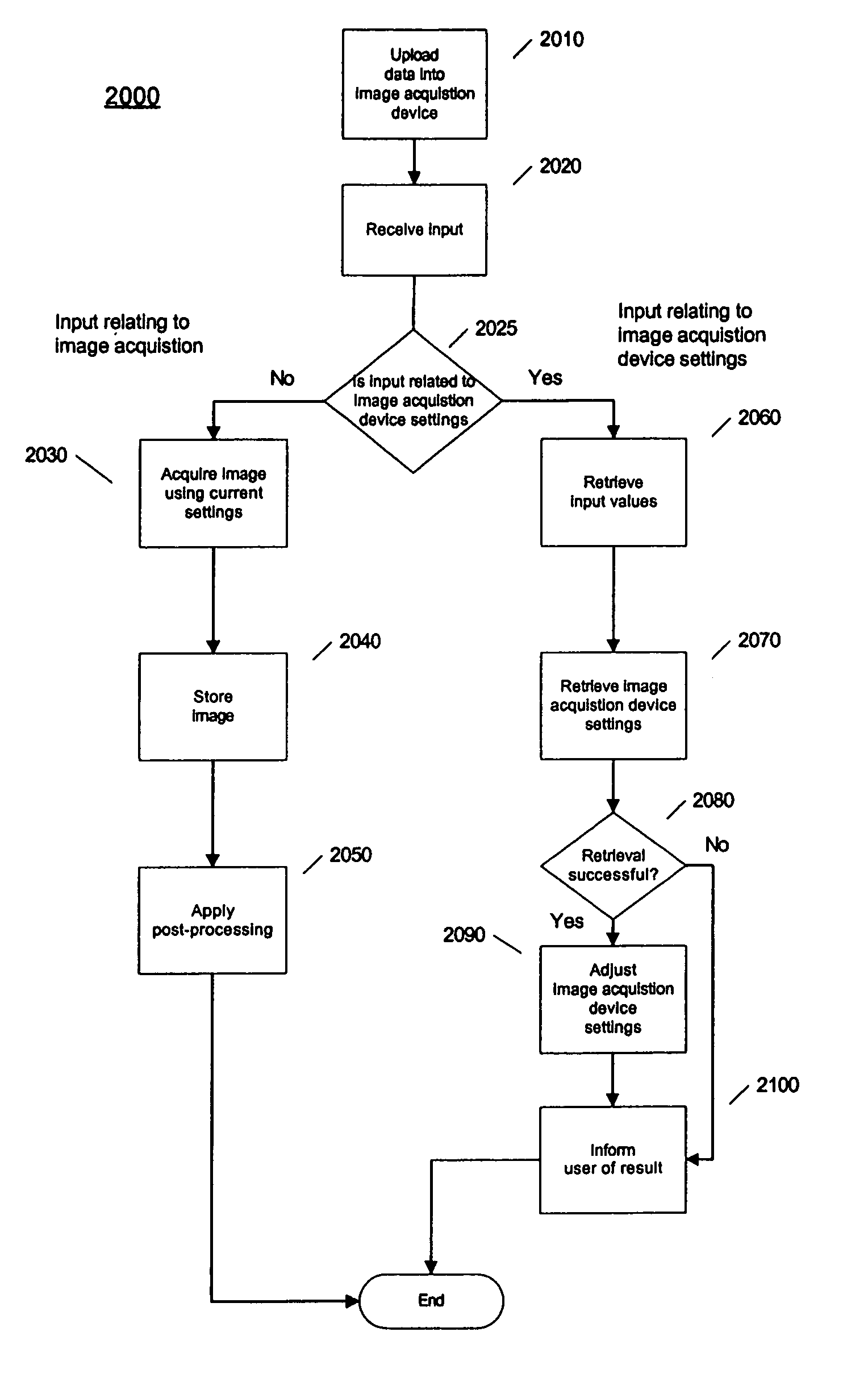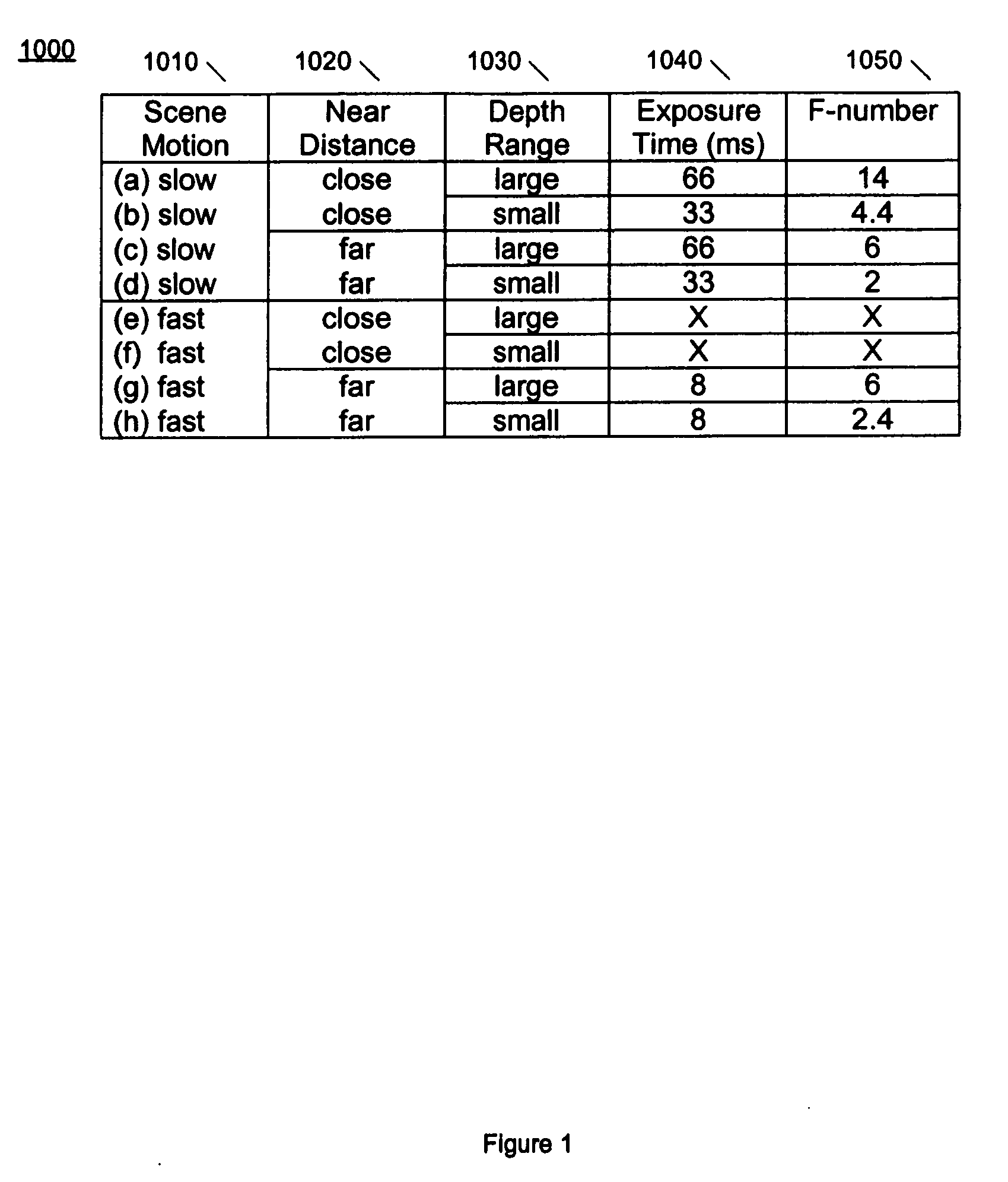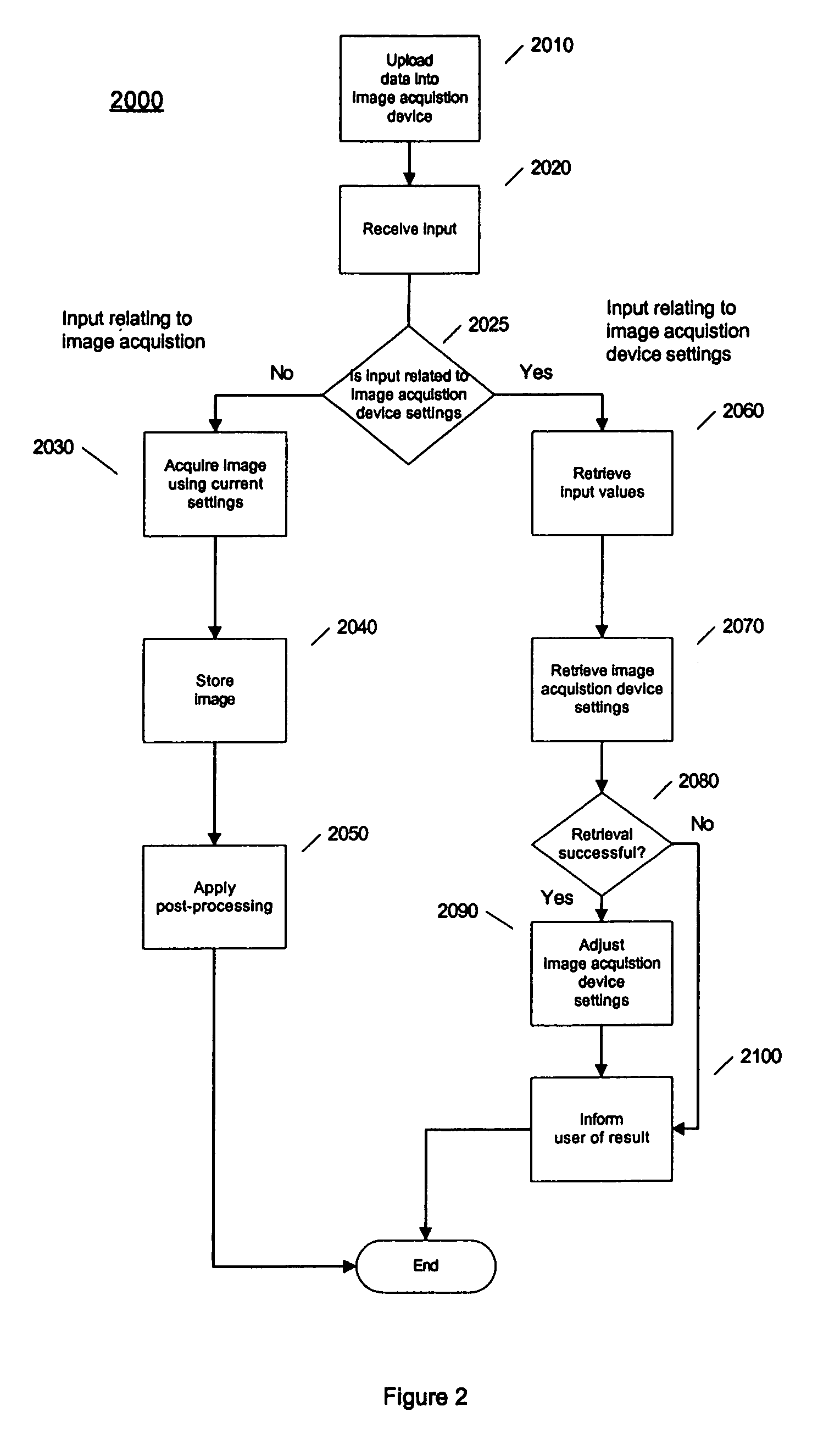Systems and methods for reducing rain effects in images
- Summary
- Abstract
- Description
- Claims
- Application Information
AI Technical Summary
Benefits of technology
Problems solved by technology
Method used
Image
Examples
first embodiment
[0030]FIG. 2, is an exemplary flow diagram of the invention which shows details for the process of adjusting camera settings 2000, using a table like the one described above with reference to FIG. 1. Overall, the system receives input from a user, uses the input to retrieve camera setting that will reduce the visibility of rain based on the user's input, and then adjusts the camera setting according to the retrieved settings.
[0031] At block 2010, data corresponding to that shown in FIG. 1 is uploaded into the camera. This upload may be done through any well known means such as a serial cable, universal serial bus connection, a wireless connection, or a memory card. Alternatively, this data may be installed when the camera is manufactured, and may contain settings considered “optimal” by the camera manufacturer. These settings may be stored in any type of memory, although a non-volatile type of memory, such as EEPROM or flash memory, may be preferred for reduced power consumption.
[0...
second embodiment
[0041]FIG. 3 is an exemplary flow diagram of the invention which shows details of measuring the rain rate. This embodiment of the invention is based on using the analytical model described above in a way that is used to find camera settings that enhance the visibility of rain, instead of reduce the visibility of rain. By enhancing the visibility of rain, the size and number of raindrops can be measured, leading to a measurement of the rain rate.
[0042] The method starts at block 3010, where the camera (image acquisition device) settings are adjusted to enhance the visibility of rain. The distance of the focal plane is set to less than (2*f*amin) to make the smallest rain drop size visible, where amin is the minimum size of a raindrop. The F-number is set to a small number, and the depth of field is set to a small range.
[0043] At block 3020, an image is acquired using the settings entered at block 3010. The acquired frame can be analyzed immediately and / or analyzed concurrently with ...
PUM
 Login to View More
Login to View More Abstract
Description
Claims
Application Information
 Login to View More
Login to View More - R&D
- Intellectual Property
- Life Sciences
- Materials
- Tech Scout
- Unparalleled Data Quality
- Higher Quality Content
- 60% Fewer Hallucinations
Browse by: Latest US Patents, China's latest patents, Technical Efficacy Thesaurus, Application Domain, Technology Topic, Popular Technical Reports.
© 2025 PatSnap. All rights reserved.Legal|Privacy policy|Modern Slavery Act Transparency Statement|Sitemap|About US| Contact US: help@patsnap.com



